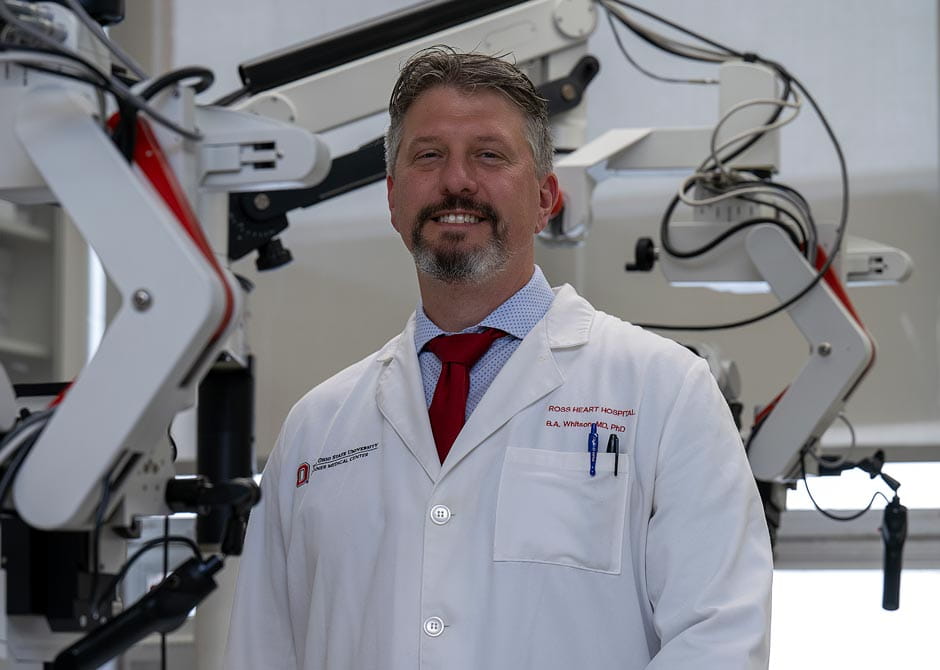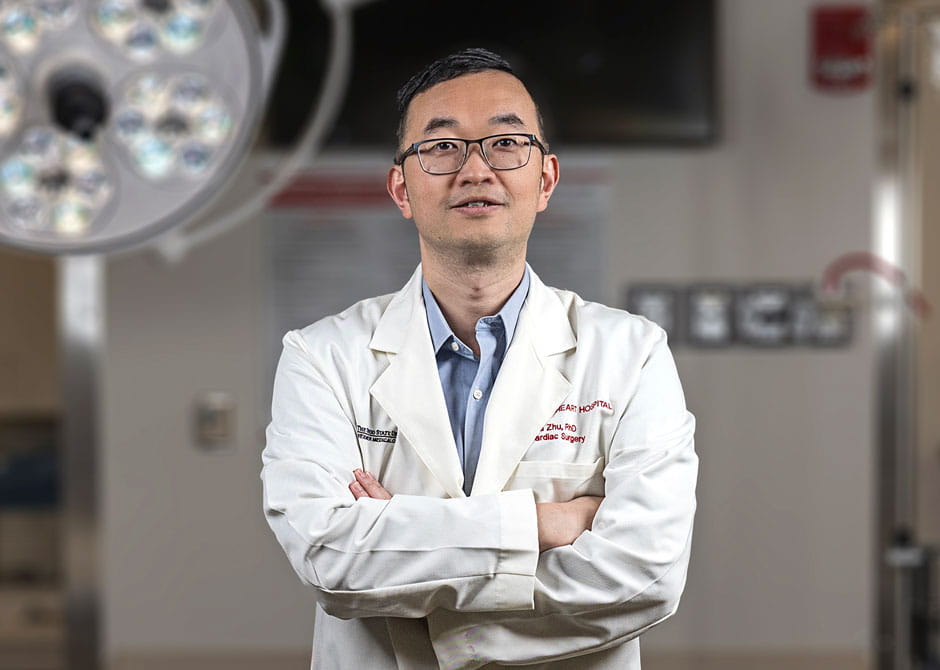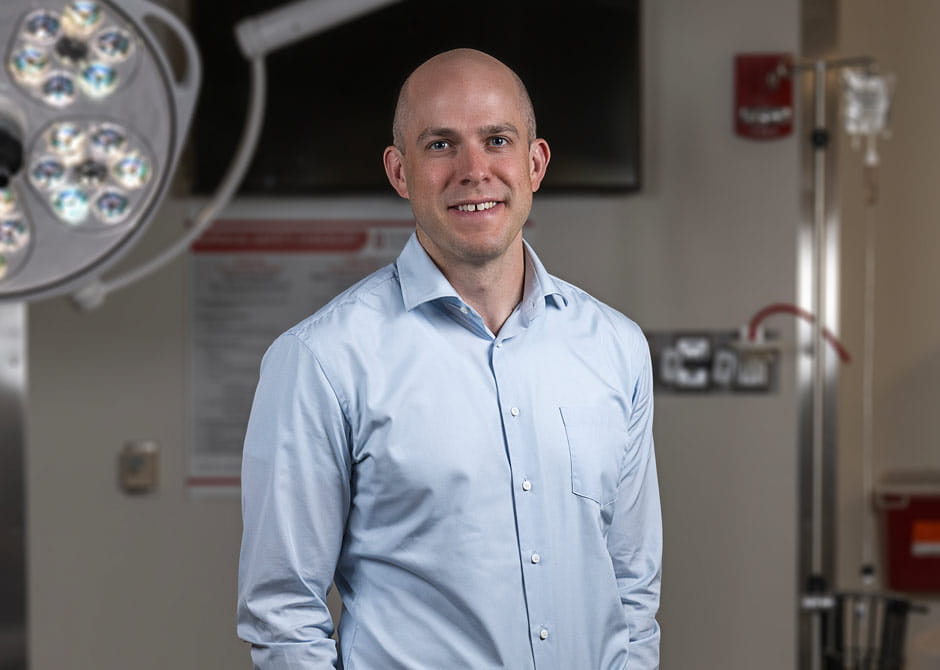 From bench to bedside, the research being conducted in the Division of Cardiac Surgery is critical. In 2022, more than 700,000 people died from heart disease in the United States. The work of the division’s surgeon-scientists and bench scientists is having a tremendous impact on our patients.
From bench to bedside, the research being conducted in the Division of Cardiac Surgery is critical. In 2022, more than 700,000 people died from heart disease in the United States. The work of the division’s surgeon-scientists and bench scientists is having a tremendous impact on our patients.
Currently, there are numerous studies in progress that are led by 15 division surgeons and scientists. This includes a robust clinical trials portfolio that allows us to take novel technologies directly to the bedside.
“There are multiple avenues of research being conducted in the division, including molecular biology, gene delivery, mechanical circulatory support, novel valves, and structural technologies that really enable us to treat the totality of a patient and their cardiovascular disease burden,” says Bryan Whitson, MD, PhD, division director and vice chair for Innovation and Translational Research. “We are uniquely able to see both the medical and surgical possibilities for treatment across the continuum of that disease pathology burden.”
Dr. Whitson and his team are working on treatments that target cells to reduce damage from lack of blood flow and to help the heart function better as diseases progress or are treated. These treatments include delivering new medicines directly to cells and using devices to support the heart’s function.
 Hua Zhu, PhD, a leading researcher in the division and vice chair for Basic and Translational Research, explains his passion for bench-to-bedside research.
Hua Zhu, PhD, a leading researcher in the division and vice chair for Basic and Translational Research, explains his passion for bench-to-bedside research.
“Our goal is to bridge the gap between laboratory findings and clinical applications,” Dr. Zhu says. “Recently, our team has been exploring the role of small non-coding RNAs in heart development and injuries. We discovered that these RNAs and their regulatory factors are crucial in controlling heart cell function and death. The preliminary results are promising, and we are hopeful that this research will lead to new, life-saving treatments.”
He adds, “I especially like working with surgeon-scientists to tackle different clinical questions at the molecular and cellular levels.”
Another outstanding researcher and the newest faculty member in the division is Matthew Gorr, PhD. Dr. Gorr, a biomedical scientist, appreciates the collaborative nature of the division’s research efforts and how it has a greater benefit on the patient.
“Working alongside surgeons, scientists and engineers allows us to tackle complex problems from multiple angles,” Dr. Gorr says. “Usually, the clinician and the bench scientists are working separately, but in our division, we have the ability to work together on our research, resulting in a clear clinical relevance.”

After discovering that the right ventricle of the heart has unique features compared to the left ventricle, Dr. Gorr is using various scientific techniques to study the right ventricle’s biology, including analyzing RNA, examining tissues under a microscope, studying molecules, sorting cells and growing cells in the lab. The goal is to understand the right ventricle better and find new treatments for disease that affects the right side of the heart.
The collective efforts of Dr. Whitson, Dr. Zhu, Dr. Gorr, and all the surgeon-scientists and researchers in the Division of Cardiac Surgery are proof of the team’s steadfast commitment to improving patient outcomes.
“Our ultimate goal is to improve the quality of life for our patients,” Dr. Whitson says. “Every study, every experiment and every surgical procedure is driven by that mission.”
